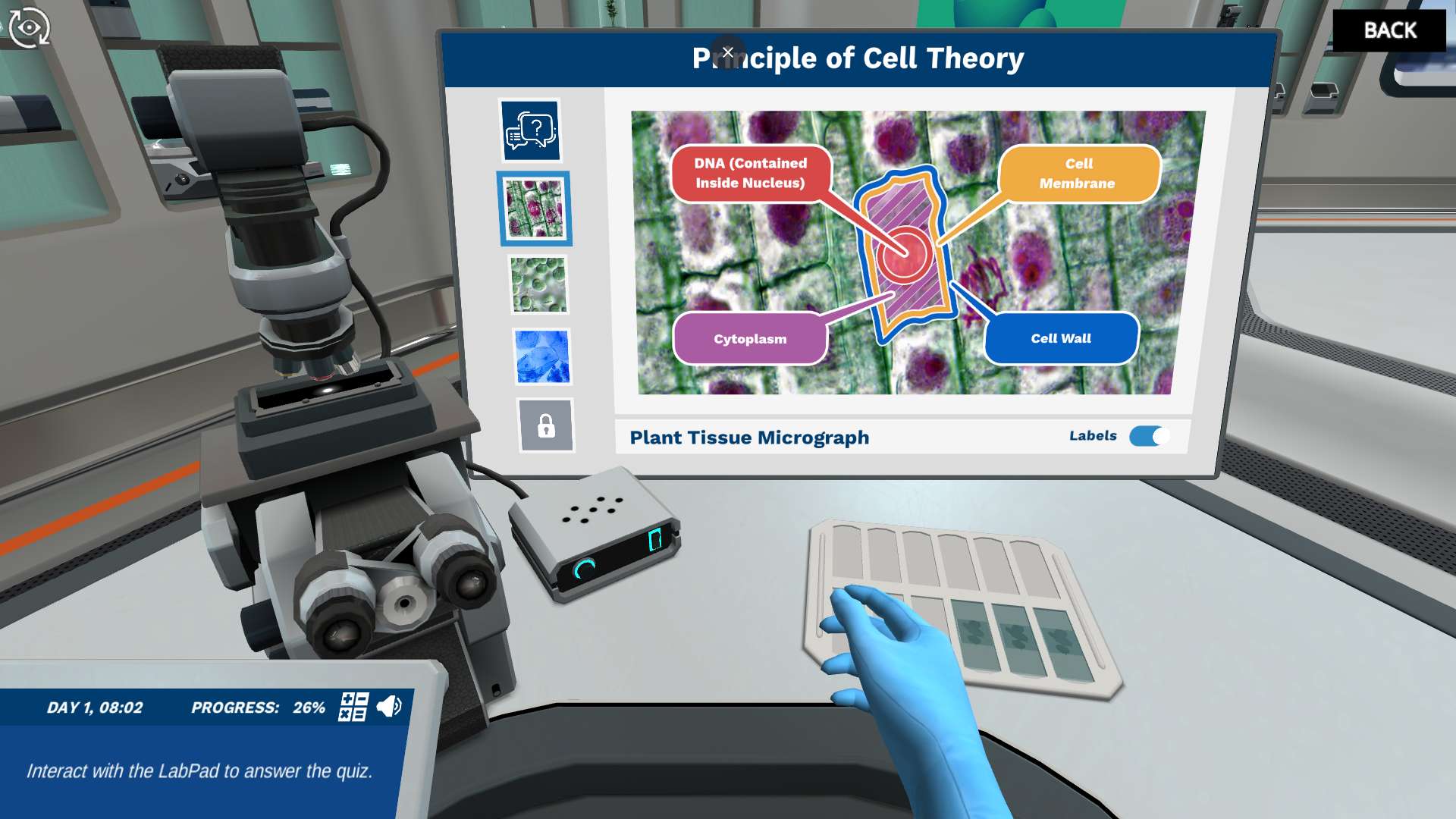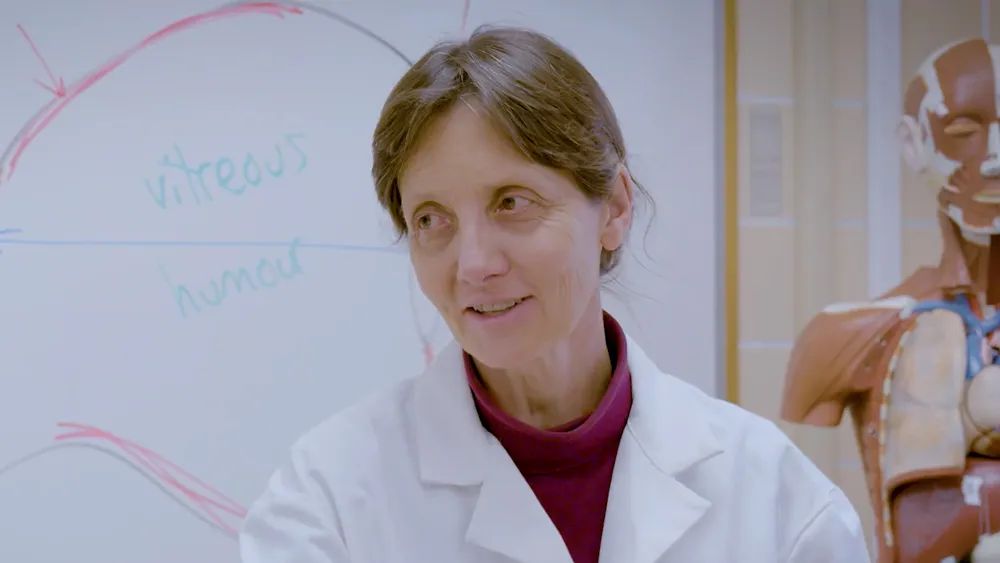Heading 1
Heading 2
Heading 3
Heading 4
Heading 5
Heading 6
Lorem ipsum dolor sit amet, consectetur adipiscing elit, sed do eiusmod tempor incididunt ut labore et dolore magna aliqua. Ut enim ad minim veniam, quis nostrud exercitation ullamco laboris nisi ut aliquip ex ea commodo consequat. Duis aute irure dolor in reprehenderit in voluptate velit esse cillum dolore eu fugiat nulla pariatur.
Block quote
Ordered list
- Item 1
- Item 2
- Item 3
Unordered list
- Item A
- Item B
- Item C
Bold text
Emphasis
Superscript
Subscript
About This Simulation
Explore different cell samples under the microscope to identify the differences between eukaryotes and prokaryotes. Build the structure of an animal cell and choose the internal organelles of four specialized cells.
Learning Objectives
- Explain cell theory
- Describe the main differences between the prokaryotes, eukaryotes, plants and animals
- Describe the different intracellular and extracellular components forming eukaryotic cells
About This Simulation
Lab Techniques
- Microscopic analysis
Related Standards
- HS-LS1-4
- Biology Unit 2.1
- Biology Unit 2.3
- Biology Unit 2
- Biology Unit 2.2
- Biology Unit 2.10
- Biology Unit 2.4
- Biology 1.3 Membrane structure
- Biology 1.1 Introduction to cells
- 1.2 Ultrastructure of cells
Learn More About This Simulation
What components make your cells unique? In this simulation, you will learn to distinguish the structures and internal organelles of prokaryotes and eukaryotes. Diving deeper into eukaryotic cells, we highlight the physical structures of the two main types and the function of each internal organelle.
Apply cell theory
Observe different samples using a microscope and determine whether the organisms are unicellular or multicellular. Each principle of cell theory will be introduced, to help you learn the differences between prokaryotes and eukaryotes. With your own knowledge, you will classify the cell samples into prokaryotes and eukaryotes.
Differentiate between plant and animal cells
Have a unique experience differentiating between two holo models of a plant and an animal cell. Match different organelles considering their function with the type of cell they correspond to. Watch out, maybe some of them are so versatile they can be spotted in both types of cells.
Build a fully functional animal cell
In matching internal organelles to their corresponding animal cell, you will learn about the function and importance of the nucleus, endoplasmic reticulum, Golgi apparatus, lysosomes, ribosomes, centrosomes, and mitochondria. Finally, you will determine which cellular structures are unique to specific animal cells such as sarcomeres, tight junctions, axons, dendrites, and the extracellular matrix.
For Science Programs Providing a Learning Advantage
Boost STEM Pass Rates
Boost Learning with Fun
75% of students show high engagement and improved grades with Labster
Discover Simulations That Match Your Syllabus
Easily bolster your learning objectives with relevant, interactive content
Place Students in the Shoes of Real Scientists
Practice a lab procedure or visualize theory through narrative-driven scenarios


FAQs
Find answers to frequently asked questions.
Heading 1
Heading 2
Heading 3
Heading 4
Heading 5
Heading 6
Lorem ipsum dolor sit amet, consectetur adipiscing elit, sed do eiusmod tempor incididunt ut labore et dolore magna aliqua. Ut enim ad minim veniam, quis nostrud exercitation ullamco laboris nisi ut aliquip ex ea commodo consequat. Duis aute irure dolor in reprehenderit in voluptate velit esse cillum dolore eu fugiat nulla pariatur.
Block quote
Ordered list
- Item 1
- Item 2
- Item 3
Unordered list
- Item A
- Item B
- Item C
Bold text
Emphasis
Superscript
Subscript
A Labster virtual lab is an interactive, multimedia assignment that students access right from their computers. Many Labster virtual labs prepare students for success in college by introducing foundational knowledge using multimedia visualizations that make it easier to understand complex concepts. Other Labster virtual labs prepare learners for careers in STEM labs by giving them realistic practice on lab techniques and procedures.
Labster’s virtual lab simulations are created by scientists and designed to maximize engagement and interactivity. Unlike watching a video or reading a textbook, Labster virtual labs are interactive. To make progress, students must think critically and solve a real-world problem. We believe that learning by doing makes STEM stick.
Yes, Labster is compatible with all major LMS (Learning Management Systems) including Blackboard, Canvas, D2L, Moodle, and many others. Students can access Labster like any other assignment. If your institution does not choose an LMS integration, students will log into Labster’s Course Manager once they have an account created. Your institution will decide which is the best access method.
Labster is available for purchase by instructors, faculty, and administrators at education institutions. Purchasing our starter package, Labster Explorer, can be done using a credit card if you are located in the USA, Canada, or Mexico. If you are outside of North America or are choosing a higher plan, please speak with a Labster sales representative. Compare plans.
Labster supports a wide range of STEM courses at the high school, college, and university level across fields in biology, chemistry, physics, and health sciences. You can identify topics for your courses by searching our Content Catalog.


















